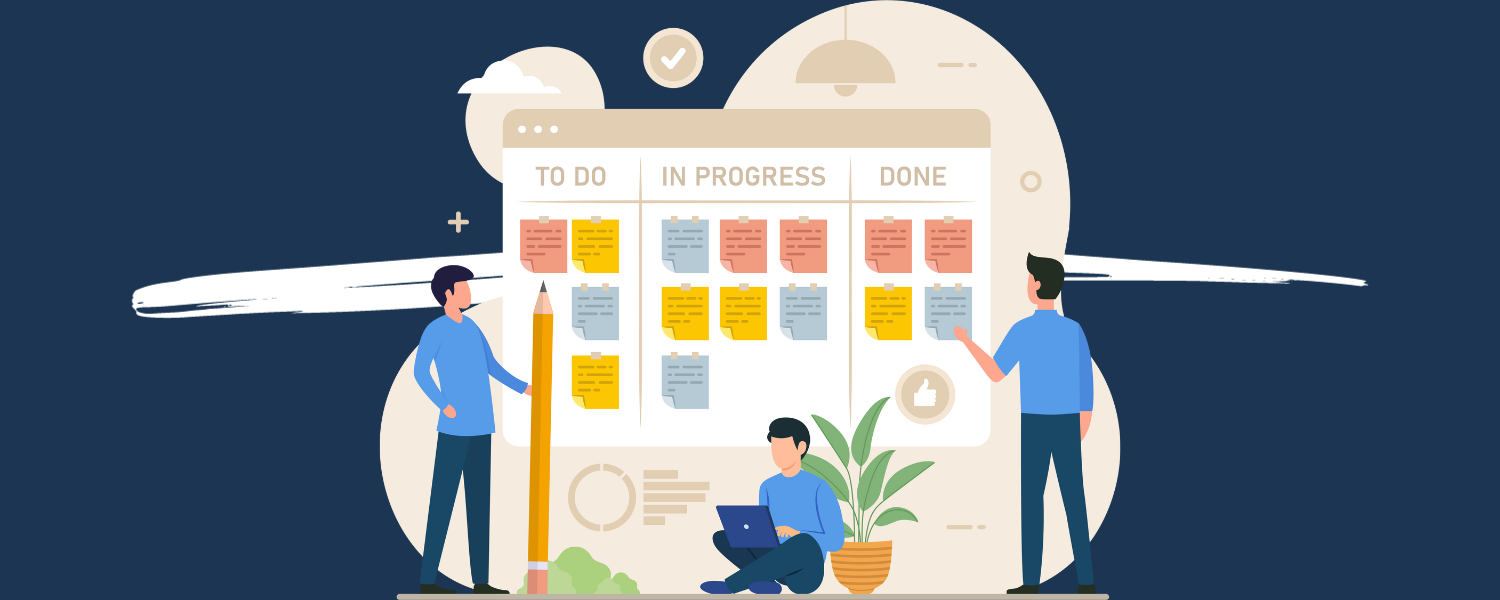Kanban board software has become an essential tool for teams that want to organize work and boost productivity. With so many options available, it’s not easy to determine which solution is the best fit for your needs. To help you choose, we have reviewed the ten best Kanban software tools you can use in 2024 based on features, pricing, integrations, ease of use, and much more.
Table of contents
- The best kanban board tools at a glance
- What is Kanban board software?
- How to choose a great Kanban tool
- How did we review these apps?
- 1. Notion
- 2. Monday.com
- 3. Jira
- 4. Trello
- 5. Asana
- 6. ClickUp
- 7. Smartsheet
- 8. Microsoft Planner
- 9. Zoho Projects
- 10. Todoist
- Best practices when working with Kanban boards
- Conclusion
The best kanban board tools at a glance
| Software | Best for | Price | Key features | Integrations |
|---|---|---|---|---|
| Notion | All-in-one workspace | Free, $8/month | Templates, databases, full customization | Asana, Slack, Trello, + more |
| Monday.com | Enterprise teams | Free, $8/month | Workload management, automation, communication | CRM, cloud storage, payroll + more |
| Jira | Software teams | Free, $8.15/month | Roadmapping, agile framework, dev stack integrations | Code repos, QA systems, dev tools |
| Trello | Lightweight boards | Free, $5/month | Intuitive, great free plan, templates | Mind maps, custom fields |
| Asana | Marketing teams | Free, $10.99/month | Project management, calendar view, improved reporting | File sharing, video software, email, AI writing |
| ClickUp | Customization | Free, $7/month | Extremely customizable boards, views, fields | Calendars, reminders, docs, goals |
| Smartsheet | Data-driven teams | Free, $7/month | Robust reporting, tracking, automation | Forms, files, task lists |
| Microsoft Planner | Microsoft users | Free with Microsoft 365 | Tight Microsoft 365 integration, easy starter option | Outlook, Teams, OneDrive |
| Zoho Projects | Mid-size businesses | Free, $5/month | Project oversight, budgeting, time tracking, integration support | Microsoft 365, Slack, Google Workspace |
| Todoist | Personal task management | Free, $4/month | Intuitive interface, powerful task categorization, great mobile experience | Calendars, file integration |
What is Kanban board software?
Kanban board software provides digital boards to visualize team workflows. It moves beyond static to-do lists to focus on the flow of work.
Kanban boards use columns or lanes to depict progress from left to right. Work starts out in a backlog, moves to a progress column when being handled, and advances toward a done status.
Cards on a Kanban board represent individual tasks or work items. Team members can drag these cards across the board’s columns to indicate status changes.
Advanced software tools allow you to set limits for the amount of cards per column. This ensures teams focus on finishing existing items before starting new ones. The goal is to smooth out workflow, reduce bottlenecks, and boost efficiency.
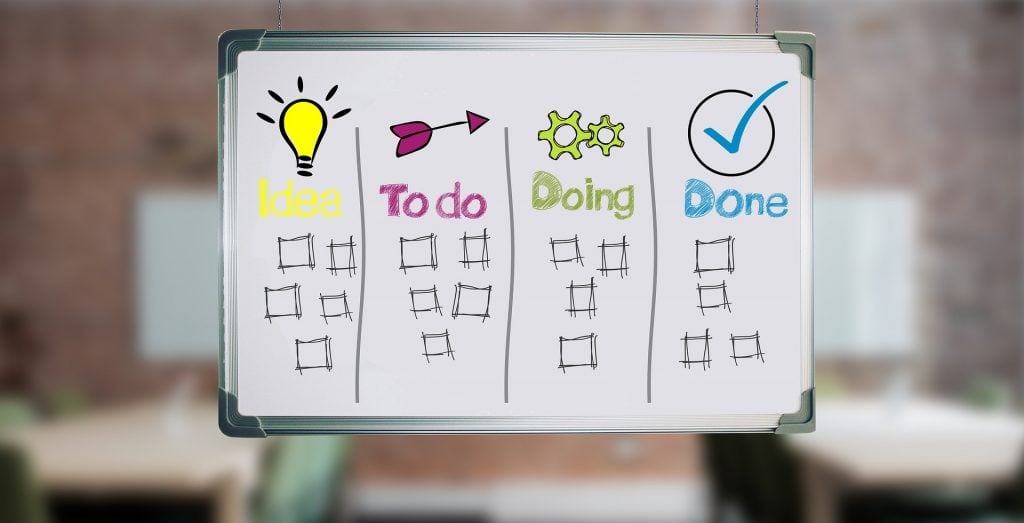
How to choose a great Kanban tool
With so many Kanban software options, it helps to evaluate tools across the following key criteria:
- Customization: The ability to add custom columns, card templates, fields, and board views.
- Analytics: Reporting on cycle times, throughput, workloads, and productivity.
- Collaboration: Features that enhance communication, like comments and notifications.
- Pricing: Consider budget restraints weighing features versus value for money.
- Integrations: How well the software connects with other productivity and organization apps.
Teams should also think about flexibility needs and learning curves. Some tools provide easier onboarding, while enterprise platforms offer endless customization at the cost of complexity.
How did we review these apps?
In compiling this list of the top Kanban software tools, we took a close look at the diverse options available for teams today. There are now robust solutions for organizations of all sizes and specialties.
We focused on tools that go beyond basic boards to provide value-adds like customization, integrations, reporting, and automation. These features take Kanban boards to the next level for monitoring workflows and increasing efficiency.
In particular, we analyzed each platform across factors like:
- Team size and specialty
- Depth of customizable board views
- Analytics strengths
- Integration capabilities
- Learning curves
- Overall usability and interface
Striking the right balance between complexity and simplicity is important. Teams should feel empowered, not overwhelmed, by software intended to help visualize productivity.
Enterprise marketing teams have vastly different needs than small creative agencies or software engineering groups. However, the Kanban methodology can benefit all of them.
1. Notion
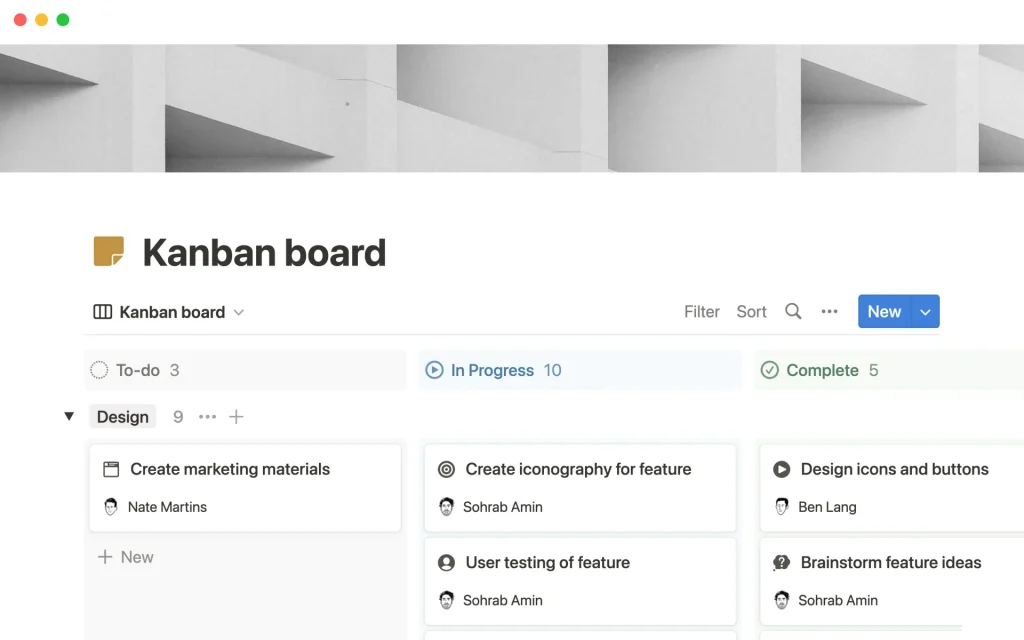
Image by: Notion
🥇 Best for: All-in-one workspace
✅ Pros:
- Templates for multiple board views
- Versatile and powerful
- Fully customizable cards and columns
- Integrates with calendars, docs, tasks, and more
❌ Cons:
- Steeper learning curve
- No workload management
💻 Platforms: Web, Windows, Mac, iOS, Android
💲 Price: Free | Plus: starts at $8 per user per month
Notion provides Kanban boards alongside note-taking, wikis, calendars, and databases. It works well for individuals and teams that want an all-in-one workspace. Various template gallery views allow you to toggle between traditional boards, calendar views, and table views.
Each card in Notion can house rich text, checklists, comments, attachments, and links to related pages. Columns are fully adjustable as well. This level of customizability makes Notion one of the most flexible options available, especially considering the hundreds of available templates online ready to be used.
2. Monday.com
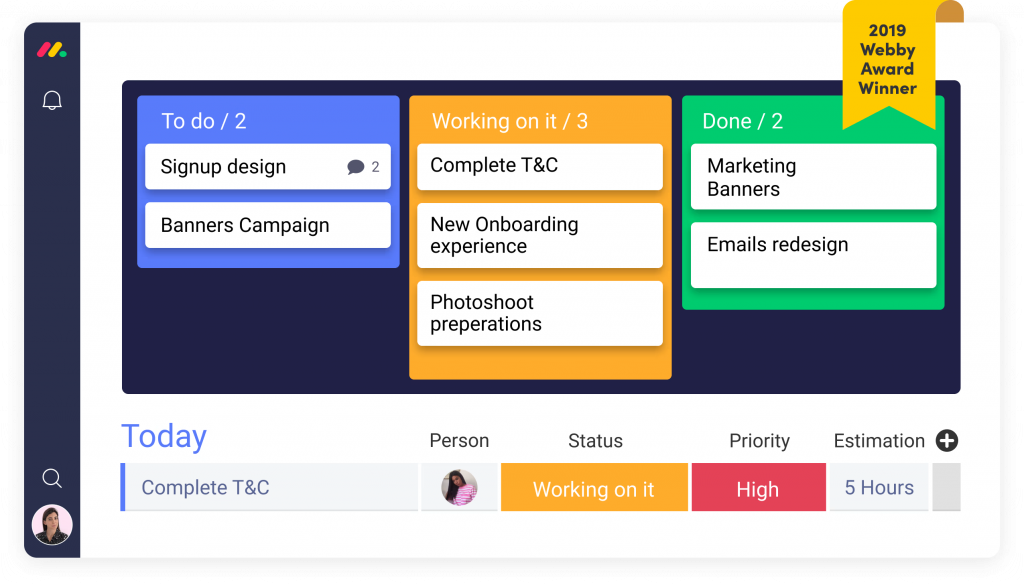
Image by: Monday.com
🥇 Best for: Enterprise teams
✅ Pros:
- Intuitive UI with easy card drag-and-drop
- Workload management and automation
- Real-time team communication
- Robust integrations
❌ Cons:
- Expensive pricing
- Steep learning curve
💻 Platforms: Web, Windows, Mac, iOS, Android
💲 Price: Free | Plans start at $8 per user per month
With stellar user reviews, Monday.com remains a top choice for large organizations. It comes packed with features like workload management, reminders, dependencies mapping, automation, and time tracking.
The board interface is incredibly intuitive, allowing you to drag and drop cards between statuses easily. Group similar cards in lanes, change swimlane order, and toggle views from the timeline to a map to a calendar and more.
Robust integrations expand functionality even further. Connect Monday.com to your CRM, cloud storage, project management tools, payroll systems, and hundreds of other business apps.
Overall, Monday.com is suited for enterprise teams through automation, transparency, and communication clarity.
3. Jira
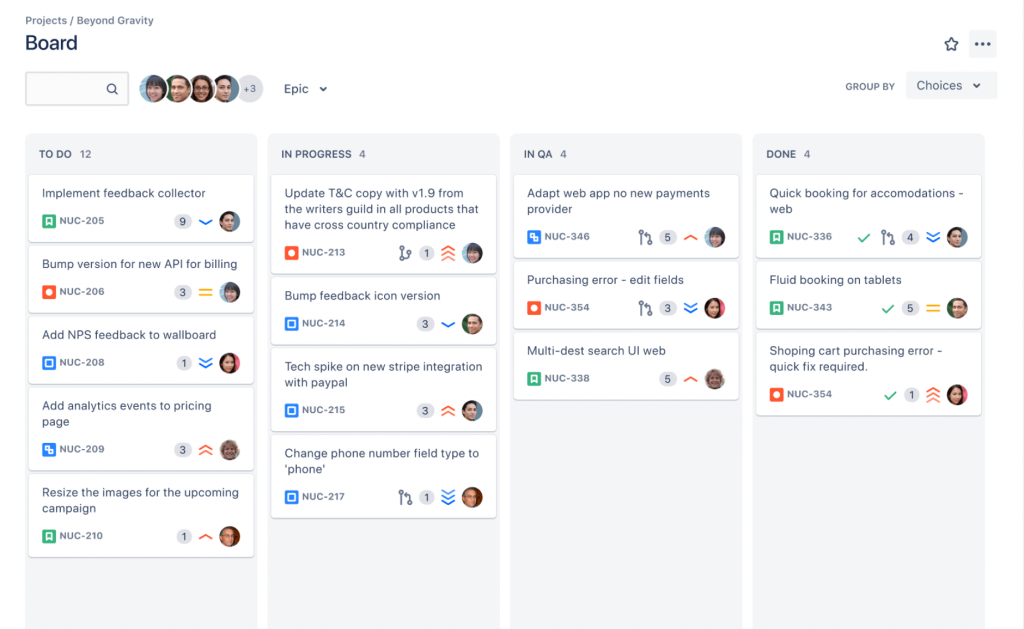
Image by: Jira
🥇 Best for: Software teams
✅ Pros:
- Advanced road mapping
- Robust customization
- Ideal for agile framework
- Tons of integrations
❌ Cons:
- Steep learning curve
- It can get complex fast
💻 Platforms: Web
💲 Price: Free | Plans start at $8.15 per user per month
Jira needs no introduction, especially among software engineering teams. It popularized the agile workflow, guiding projects from ideation to deployment.
Flexible boards allow you to plan sprints, map dependencies, customize statuses, categorize by epic and team, and more. Seamlessly integrate Jira with code repositories, build tools, QA systems, and the rest of your dev stack.
While extremely powerful, Jira also comes with a steep learning curve. It works best for mid-size and enterprise teams willing to invest in onboarding and setup. Still, it remains a top choice for software organizations.
4. Trello
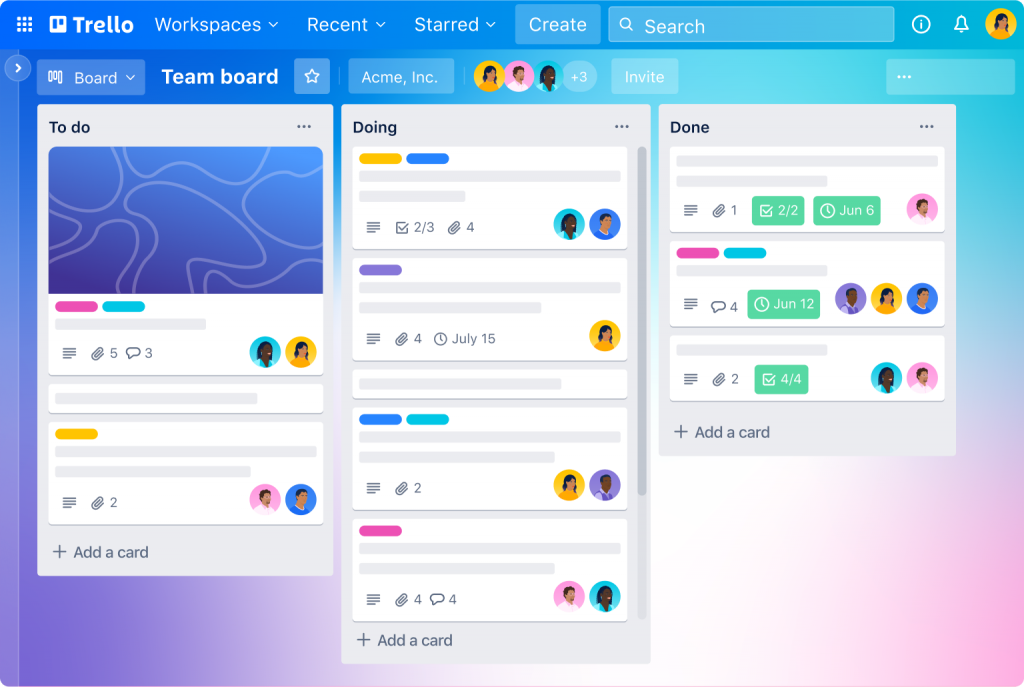
Image by: Trello
🥇 Best for: Lightweight boards
✅ Pros:
- Simple and intuitive interface
- Easy to get started
- Great free plan
- Tons of templates
❌ Cons:
- Limited reporting
- It can feel basic over time
💻 Platforms: Web, Windows, Mac, iOS, Android
💲 Price: Free | Plans start at $5 per user per month
Trello is a must-have in a list of the best kanban board tools. As one of the very first Kanban apps, Trello keeps going strong due to its simplicity. It just works right out of the box: quickly create cards, drag them across lists, assign members, attach files, and fill in checklists.
Trello won’t provide the robust functionality offered by enterprise-level options. However, its free plan and intuitive design make it easy for small teams to start organizing work.
Power-ups and integrations help expand Trello, including calendars, mind maps, custom fields, and more. It may start to feel limited over time, but it remains a great entry-level Kanban board software.
5. Asana
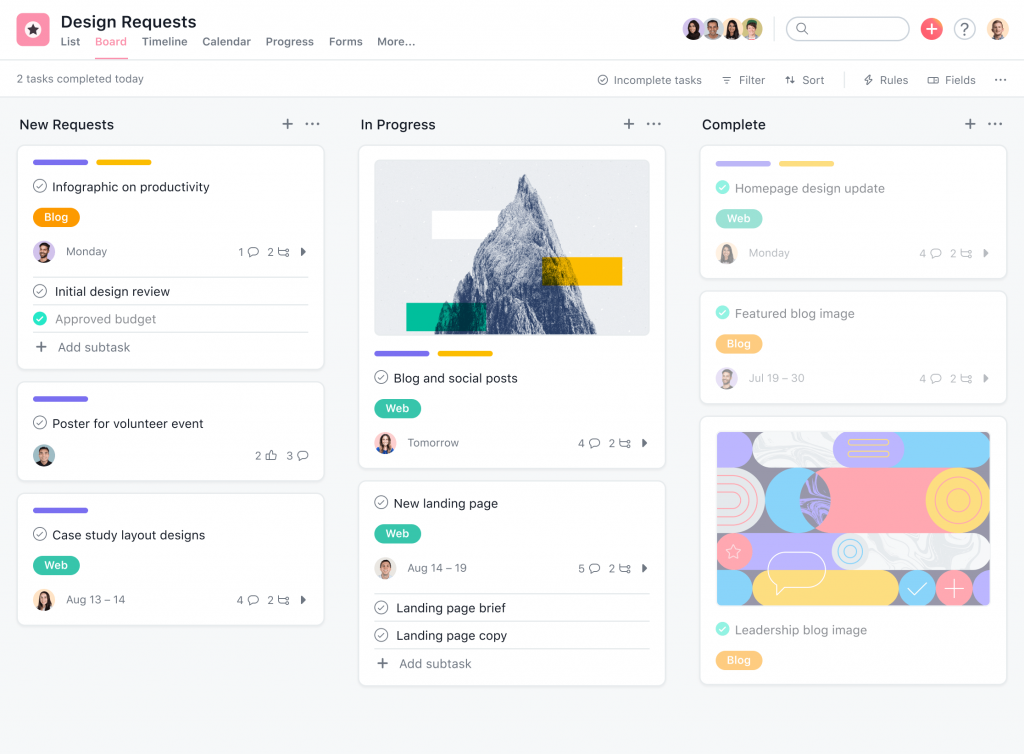
Image by: Asana
🥇 Best for: Marketing teams
✅ Pros:
- Great for managing projects
- Custom statuses and views
- Handy calendar outlook
- Improved reporting
❌ Cons:
- Can get pricey
- Projects can get too complex
- Every task can only be assigned to one person
💻 Platforms: Web, Windows, Mac, iOS, Android
💲 Price: Free | Plans start at $10.99 per user per month
Asana shines in managing team projects from start to finish instead of just tasks. Group projects into colorful cards with sections for objectives, checklists, attachments, conversations, and more.
Custom statuses, swimlanes, board views, calendar views, and timeline views provide flexibility. Asana also improved its reporting, showing progress bars, workloads, milestones, and goals across projects.
Integrate Asana with your favorite tools, too. It plays nicely with file-sharing apps, video software, email platforms, and even AI writing assistants.
👉 Learn more: Notion vs. Asana: Which One Should You Use?
6. ClickUp
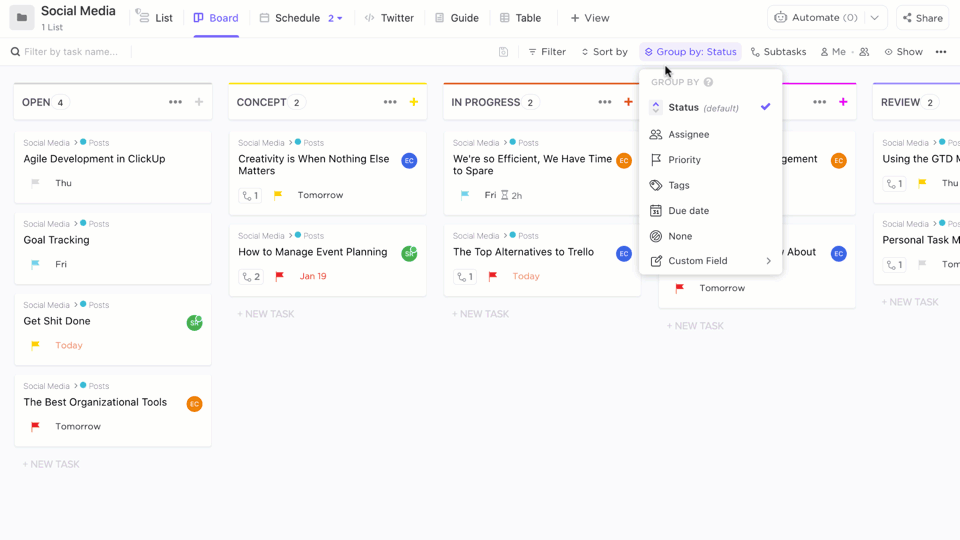
Image by: ClickUp
🥇 Best for: Customization
✅ Pros:
- Extremely customizable
- Feature-packed
- Great value for money
- Intuitive interface
❌ Cons:
- Can feel overwhelming
- Mobile apps need work
💻 Platforms: Web, Windows, Mac, iOS, Android
💲 Price: Free | Plans start at $7 per user per month
If you want custom boards tailored exactly to your workflows, ClickUp is an excellent choice. It feels like a spreadsheet solution but works perfectly as flexible Kanban software.
ClickUp allows you to create multiple board views, customize all statuses and columns, design automation rules, build custom fields, and more. It also comes packed with handy productivity features like reminders, assignee workload, calendars, docs, and goals.
The interface does have a learning curve, but intuitive drag-and-drop interaction helps. For the price, ClickUp provides an incredible value, helping all team sizes better visualize workflows. Power users will especially love the limitless customization for boards.
7. Smartsheet
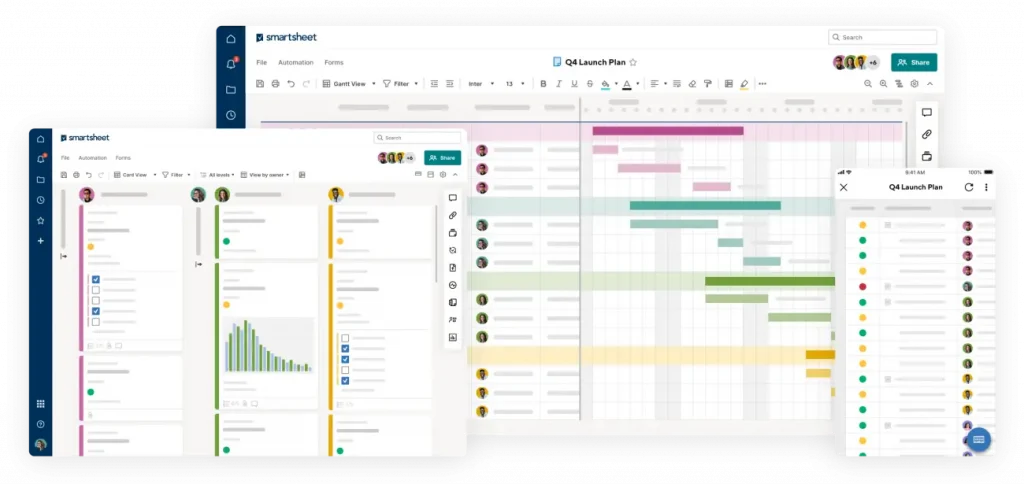
Image by: Smartsheet
🥇 Best for: Data-driven teams
✅ Pros:
- Robust reporting and tracking
- Great for data-driven decisions
- Advanced automation
- Tons of advanced features
❌ Cons:
- Steep learning curve
- It can get very complex
💻 Platforms: Web, Windows, Mac, iOS, Android
💲 Price: Free | Plans start at $7 per user per month
For managers who need in-depth tracking across multiple projects, Smartsheet offers advanced Kanban boards. The software centralizes data from sheets, forms, files, and task lists into shareable dashboards.
Smartsheet provides many views from the grid to cards to calendar format. Tools like automatic progress reports, version history, resource management, and dependencies mapping optimize oversight. You can also build no-code automations, eliminating manual work.
The robust functionality comes at the cost of complexity. Smartsheet has a steep learning curve best suited for technically savvy teams. But if you need analytics across programs and processes, it delivers incredibly valuable insights.
8. Microsoft Planner
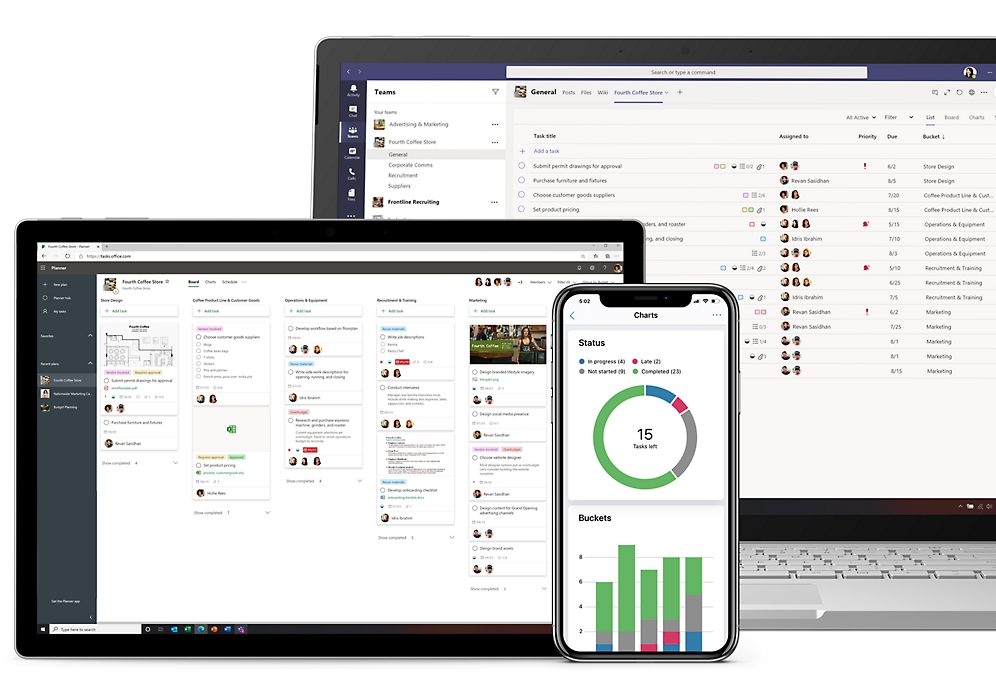
Image by: Microsoft
🥇 Best for: Microsoft users
✅ Pros:
- Tight integration with Microsoft 365
- Easy to get started
- Handy templates
- Great for lightweight goals
❌ Cons:
- Very basic functionality
- No workload management
- Limited power-user features
💻 Platforms: Web, iOS, Android
💲 Price: Free with Microsoft 365 ($6.99/month)
For Microsoft 365 users, Microsoft Planner integrates directly with business application stacks at no added cost. While simple in scope, it offers quick ways to organize department tasks, plan team goals, and share status updates.
The basic board feels reminiscent of Trello. It lacks advanced tracking but provides an intuitive roadmap for teams who want to keep an eye on things. Easy views, notifications, attachments, comments, and chatter are just enough.
It makes an ideal entry-level planning solution for companies invested in Microsoft ecosystems. But more robust teams would still need to level up to a more featured-pack alternative in time.
9. Zoho Projects
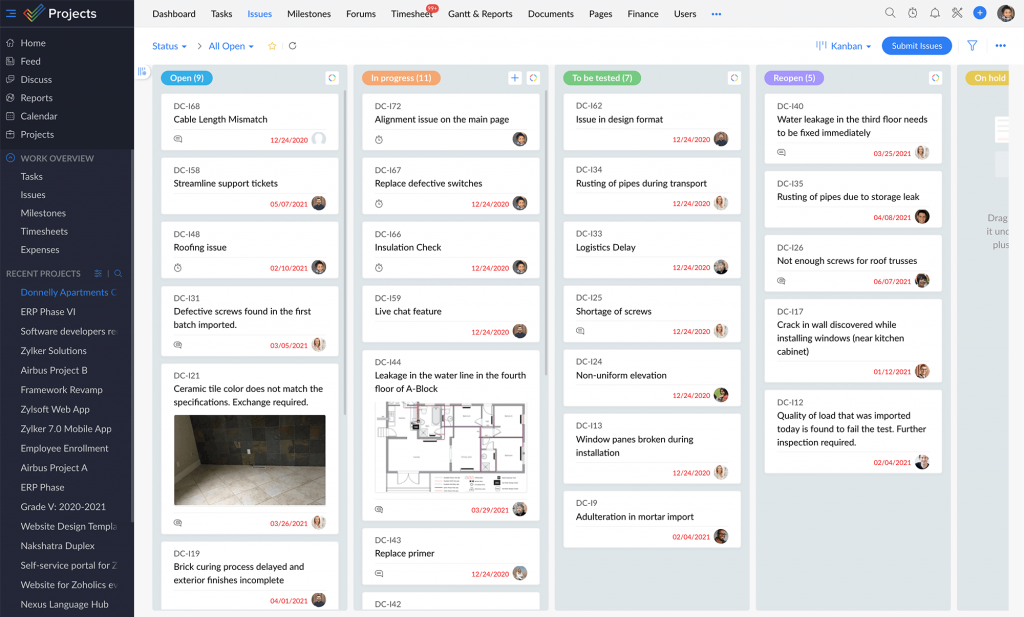
Image by: Zoho Projects
🥇 Best for: Mid-size businesses
✅ Pros:
- Robust project oversight
- Budgeting and time tracking
- Decent customization
- Competitive pricing
❌ Cons:
- Interface less intuitive
- Fewer standout features beyond basics
💻 Platforms: Web, iOS, Android
💲 Price: Free | Plans start at $5 per user per month
Zoho Projects balances key PM functionality for lean mid-market teams with an affordable cost. It covers essential oversight, including custom fields, timesheets, reporting, file sharing, task management, and more.
Good flexibility allows you to adjust modules, permissions, views, calendar feeds, dashboards, and other options to suit your needs. However, the interface is clunky in places, especially compared to slicker solutions.
Still, if you want to level up beyond very basic boards without heavy automation, Zoho Projects provides that middle ground. Dependable features, scalability, and integration support power mid-size business growth.
10. Todoist
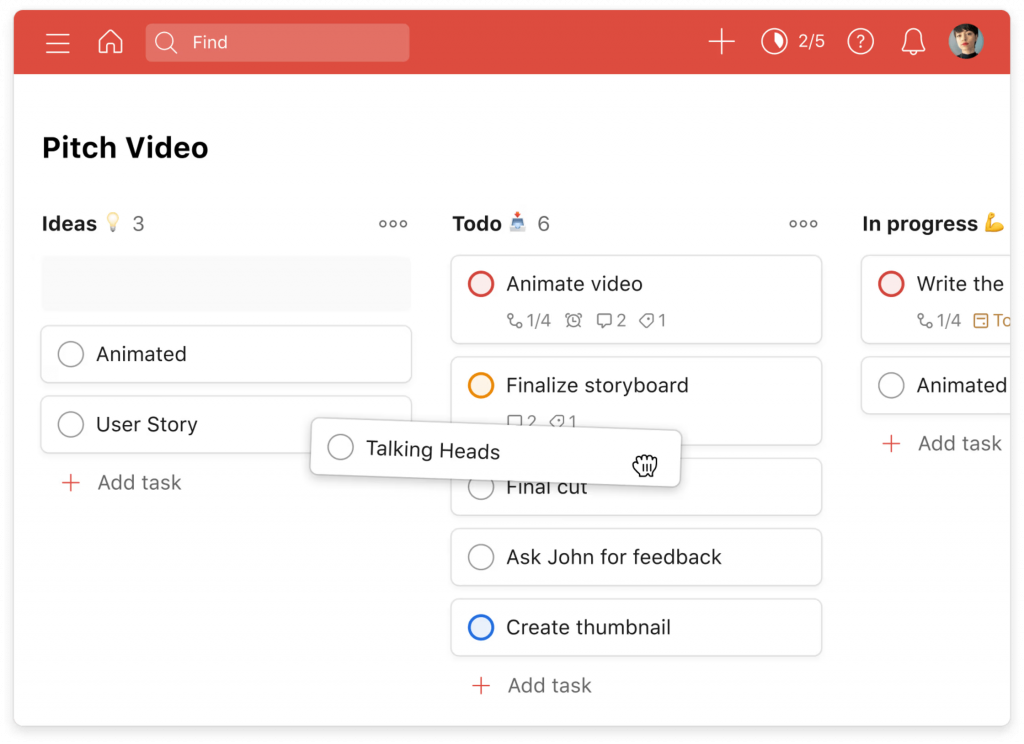
Image by: Todoist
🥇 Best for: Personal task management
✅ Pros:
- Intuitive interface
- Powerful task categorization
- Handy productivity features
- Great mobile experience
❌ Cons:
- Limitations for complex projects
- Less focus on team collaboration
💻 Platforms: Web, Windows, Mac, Linux, iOS, Android
💲 Price: Free | Plans start at $4 per user per month
For individuals seeking a personal task manager, Todoist delivers a best-in-class experience. While it doesn’t offer full-scale project oversight, the app makes it easy to organize daily to-dos.
Robust features allow you to tag tasks, set priorities, organize into sections, add reminders, add recurring tasks, attach files, integrate calendars, and more. Todoist also rolls up due soon, overdue, and completed items into smart filtered views.
The mobile experience really shines as well with quick add capabilities. Sync tasks across devices and even use offline access when needed. While basic compared to other PM tools, Todoist gives individuals powerful productivity tools.
👉 Learn more: Notion vs. Todoist: Which Task Management App Is the Best?
Best practices when working with Kanban boards
Once you choose a Kanban software for your team, here are some top tips for getting the most from your boards:
- Start slowly. Don’t overhaul all processes at once. Begin with smaller workflow management.
- Hold standups. Check the board and assign tasks during daily standup meetings.
- Limit WIP. Reduce the number of cards actively being worked on to focus effort.
- Improve flow. Analyze your value stream map to expose bottlenecks.
- Automate updates. Use triggers and actions to keep the board in sync automatically.
- Enhance visibility. Make sure cards have all relevant links, files, and conversations in one place.
Staying flexible and reviewing metrics often allows your team to continuously improve Kanban processes over time. Achieving flow through focus, communication, and automation will skyrocket productivity.
Conclusion
The Kanban board software options highlighted in this post represent some of the top solutions on the market today. As we have seen, teams of all types can benefit from visually tracking work status, progress, and blockers using advanced Kanban tools.
Top picks like Notion and Todoist appear on our list, given their flexibility and usability by individuals and groups alike. These apps make it easy to view workflows at a glance while customizing processes.
We know many teams use a combination of tools like these, along with calendars, spreadsheets, docs, and more. Constantly manually updating the status across apps grows inefficiently quickly.
That’s why we built 2sync. Rather than make you toggle between your favorite platforms, we automatically sync them together for you, keeping Notion as a unified workspace and centralized productivity hub.


